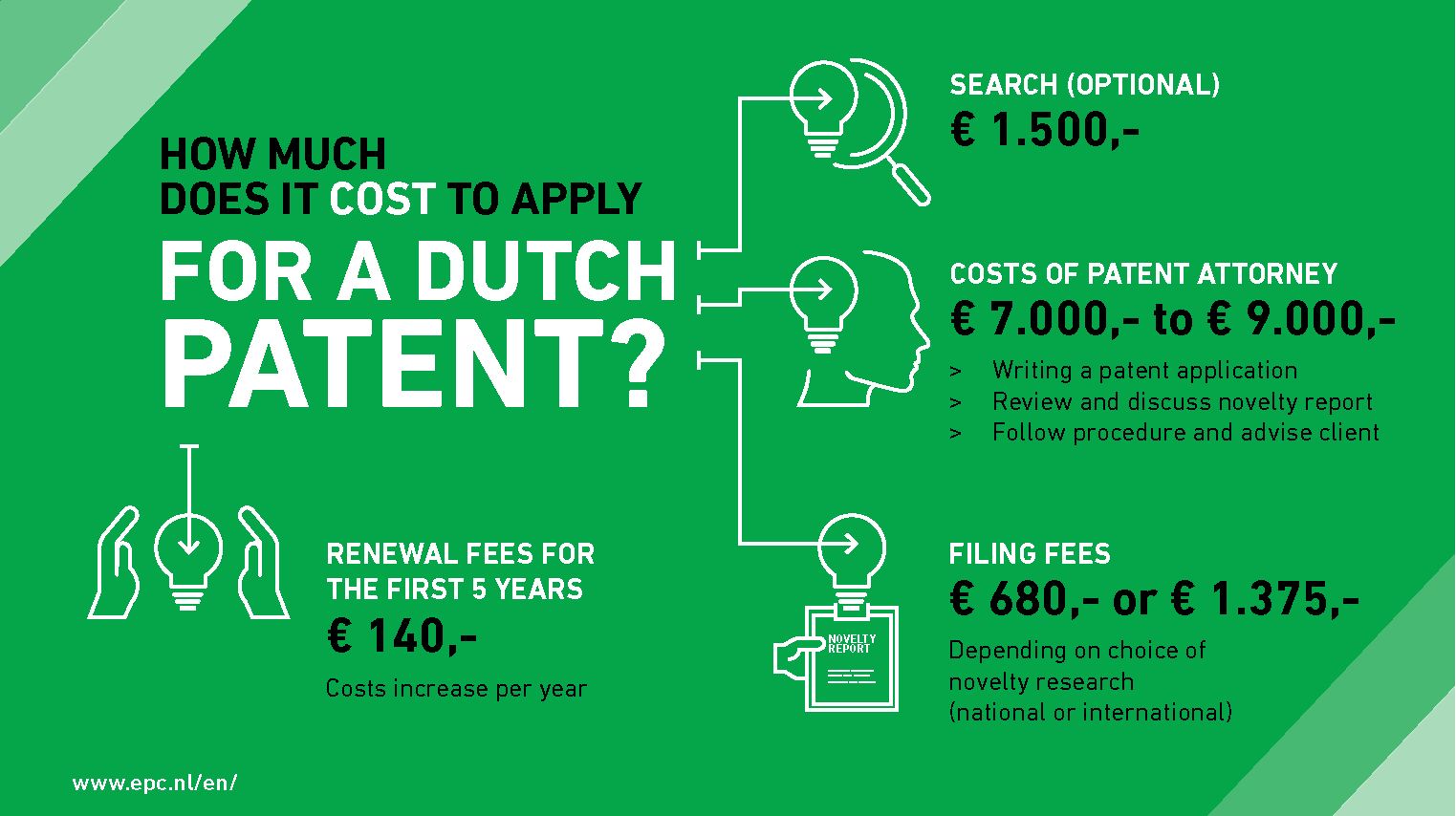How much does it cost to apply for a patent?
 How much does it cost to apply for a patent? Inventors and entrepreneurs often have no idea how much it costs to apply for a patent. At EP&C, we like to be open and honest about this. Not just about the costs for the first year, but for the entire term of a patent.
How much does it cost to apply for a patent? Inventors and entrepreneurs often have no idea how much it costs to apply for a patent. At EP&C, we like to be open and honest about this. Not just about the costs for the first year, but for the entire term of a patent.
The costs of a patent are made up of building blocks that are different for each individual patent. As a result, the amounts sometimes vary considerably. I will explain the various building blocks below, but first it is good to stop and think about the question:
What are the benefits of a patent?
Does it add value to an existing production line? Is it the backbone of your company, or is it a marketing tool? You will only be able to decide whether the costs involved in a patent are worthwhile once you have a clear idea of what you are investing in. What kind of costs are we talking about?
The building blocks that determine the cost of a patent
The costs of a patent are made up of five building blocks. Your innovation and ambitions are crucial for this, which is why we first get to know you and your product better, free of charge, so that we can estimate the cost for your specific situation.
1. Basic costs of a patent
The basis of each patent consists of a number of essential elements. We have to do some exploratory research into similar inventions, then there are the costs of writing and filing an application and processing the examiner's opinion. Without this basis, it is impossible to get a patent.
2. Type of application
There are several ways to file a patent. Which one is best for you depends on your invention and ambitions. We recommend the NL-PCT route to many entrepreneurs. This route gives you a lot of room in the first couple of years to define how and in which countries you want to use the patent. In other situations, for example if you want to outperform the competition as quickly as possible, it may be useful to apply for a patent immediately. Each type of patent application comes with its own follow-up steps and costs.
3. Number of countries
In which countries do you want to protect your invention? That too is a crucial question when it comes to finances. For each country in which you want to apply for a patent, separate costs are added, such as filing fees, possibly the costs of translating the patent and other work which is usually carried out by a local agent.
4. Period of protection
A patent is not valid indefinitely. In the countries affiliated to the European Patent Office, for example, a maximum term of 20 years applies. You pay a renewal fee for each year that you wish to retain the patent. These are annual costs that are charged for each patent, in each country.
5. The process
A lot can happen between applying for a patent and it being granted. Each proposal is assessed by an examiner. He or she may have questions or feedback, on the basis of which we would need to adapt the application.
Indication of the costs involved in applying for a patent
As you can see, there are many variables that determine the cost of a patent. To nevertheless give you an idea, you can use the estimate outlined below as a guide for obtaining a Dutch patent. If you would prefer to receive a customised cost estimate, please contact one of our patent attorneys.


About the author
I studied chemistry in Utrecht and wrote my Ph.D. thesis on organic synthesis. Before joining EP&C as a patent attorney in 2004, I worked at KeyGene, a biotechnology company. I specialize in food and...
More about Robbert-Jan >